#Maritime Britain
Text
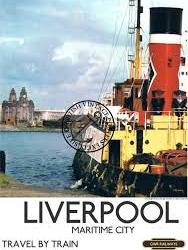

For centuries the port of Liverpool was Britain's transportation hub
#Liverpool#Merseyside#Lancashire#British Rail#seaport#vintage posters#Age of Steam#nostalgia#romantic travel#steamships#Liverpool-Belfast#Irish Sea#Maritime Britain
17 notes
·
View notes
Text

Snow Storm: Steam-Boat off a Harbour's Mouth, J.M.W. Turner, ca. 1842
#art#art history#JMW Turner#Joseph Mallord William Turner#seascape#marine art#maritime art#maritime painting#Romanticism#Romantic art#English Romanticism#British art#English art#Victorian period#Victorian art#19th century art#oil on canvas#Tate Britain
1K notes
·
View notes
Text
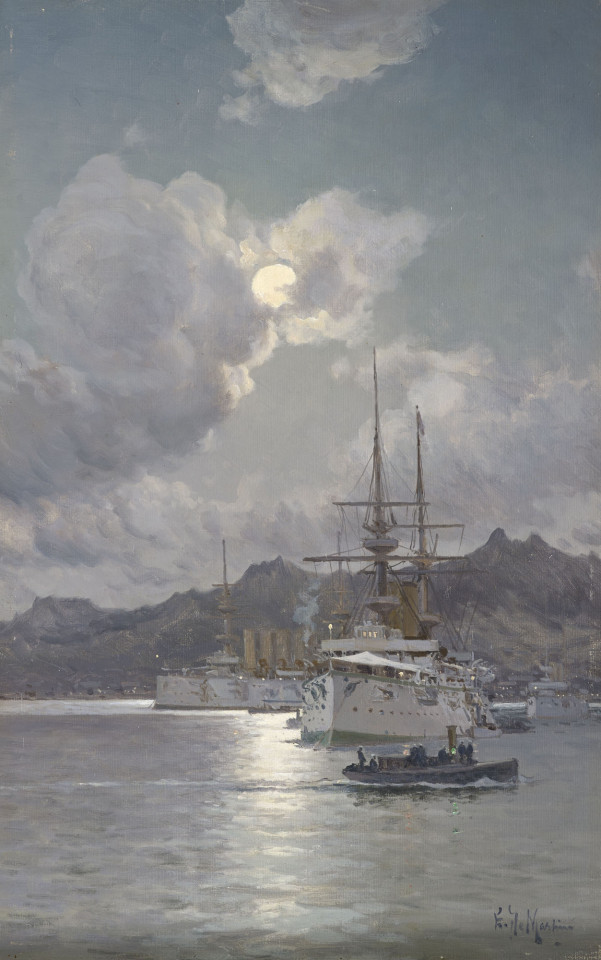
Warships at Anchor by Moonlight by Eduardo de Martino
#eduardo de martino#marine art#art#maritime#warships#moonlight#moonlit#full moon#mountains#british empire#bay#royal navy#great britain#england#age of steam#clouds#battleship#battleships#warship#anchor#moon#sea#sky
78 notes
·
View notes
Text
Only three pre-Viking anchors have ever been found in northern European waters but now there’s a fourth and it was found during an offshore windfarm project in the southern North Sea.
92 notes
·
View notes
Text
Both are unlikely political sensations who were long consigned to the fringes: Bernie Sanders, an octogenarian US Senator who inspired an army of voters far younger than himself; and Mick Lynch, a former blacklisted construction worker and child of Irish immigrants who, as the leader of the Rail, Maritime and Transport Workers Union (RMT), shot to national prominence when he humbled hostile but underinformed broadcast journalists. “I think Lynch is touching a nerve,” Sanders says.
The de facto leader of the US left has swung his considerable political heft behind a new campaign – Enough Is Enough – launched to fight Britain’s mounting cost of living crisis, which was founded in part by Lynch and the RMT. It has certainly touched a nerve: at a recent rally in Clapham, south London, many of those who had queued around the block were turned away for lack of space. “‘Enough is enough’, funnily enough, is an expression we use a lot here,” Sanders says. “People are sick and tired of often working longer hours for low wages; sick and tired of their kids having a lower standard of living than them; and they’re sick and tired of billionaires getting richer and richer while they fall behind.
“Why, with all this new tech out there, are they not seeing an improved standard of living? Why not more equality, rather than less equality? Why are living standards deteriorating, not improving? Lynch is asking that, Enough Is Enough is asking that – and it’s hitting a nerve, because people are tired of being ignored while the rich get richer.”
Political cut-through is something Sanders knows a lot about, but it was only something he really achieved in his 70s. Born into a working-class Jewish family in New York, he became the mayor of Burlington, Vermont, at 40, later becoming a House Representative and a Senator. A longstanding independent, albeit one who has frequently allied with the Democratic party, Sanders championed causes long eschewed by mainstream Democrats, such as universal healthcare, the abolition of student fees, workers’ rights and the anti-war movement. But his dramatic rise – when he was transformed from a marginalised figure to a frontrunner for the Democratic presidential nomination in 2016 – was driven by two major factors.
One was the financial crash, which exposed inequalities and insecurities that disproportionately fell on the backs of younger Americans. The other was the expectations raised by the election of Barack Obama in 2008, which, for millions of Americans with stagnating living standards, ultimately felt dashed. Although neither his 2016 or 2020 bids succeeded, they mobilised a movement that revitalised the US left and transformed it into a major political force in the Democratic party and beyond.
This brings his attention back to a perennial passion – and what he wants to talk to me about: the prospects of the US labour movement. We speak over the phone, but he hits all his rousing lines with the zest of a platform rally. The thread that runs through all his answers is class politics. This is less of a novelty in progressive politics on the British side of the Atlantic – to rousing cheers at a recent Enough Is Enough rally, Lynch proclaimed: “The working class is back” – but it was long considered alien in a US that peddled a myth of classlessness. This was a politically convenient myth in a country where, Sanders notes, three rich men have more wealth than the poorest half.
But the Brooklyn-born Vermont senator has a new mission: to deploy his political weight behind efforts to unite the struggles of the US and British labour movements. On Wednesday, Sanders will bring his trademark oratory to an RMT rally in central London.

Sanders as mayor of Burlington in 1981.
The labour movements in the US and Britain are significantly weaker than most of their western counterparts. In the US, trade unions had been long hobbled by “red scares” and anti-union so-called “right to work” laws, but they were severely weakened under Ronald Reagan, whose administration, in 1981, fired more than 11,000 striking air traffic controllers to send a salutory lesson to other workers. Today, little more than one in 10 US workers are unionised. British trade unionism did not suffer such a comprehensive rout, but the number of organised workers – about a quarter of the workforce – is half the level of the peak in 1979.
Does Sanders believe both labour movements are learning lessons? “I think what we’re beginning to see here in the US is a significant acceleration of trade union organising,” he says. “We are seeing more workers organising in unions, filing with the National Labour Relations Board [NLRB] to get certification – more than for a very long time.”
What has made him particularly optimistic is workers’ struggles in the union deserts of Starbucks and Amazon. Sanders recently joined striking Starbucks workers on a picket line in Boston. After more than 85 union organisers were fired by the coffee chain in recent months – the NLRB has filed multiple complaints against the firm – his support has boosted the national profile of the fight. “In Starbucks and Amazon, hundreds are joining unions – in Amazon, they’re taking on Jeff Bezos, the second wealthiest person in the world. We’re seeing struggles in university campuses, hospitals, nurses – we’re seeing unprecedented organising compared to what we’ve seen in recent years.”
But he touches on an apparent contradiction: “While the middle classes decline while the rich become richer and richer, there’s more support for the trade union movement in the US – people feel much stronger about unions than previously.” And he is right: last year, 68% of Americans told pollsters they approved of unions, the highest level since 1965, while polling in the UK has shown that most working-age Britons back the current wave of strikes. Yet that hasn’t translated into most joining a union. Why?
“In the US, corporations make it very hard for workers to exercise their constitutional rights to form a union,” Sanders says. “[Last Wednesday], the NLRB found Starbucks had fired workers and rescheduled those shop workers who were forming unions – which is illegal. We are seeing companies threatening workers that they’ll go to China. There’s massive corporate opposition to workers forming unions in the country.”
He highlights another formidable barrier: “We’ve got a media in the country which is certainly not sympathetic to unions, which will very rarely discuss the benefits of unions, like better working conditions, wages, pensions, et cetera, et cetera. The media is obviously owned by a handful of large corporations who don’t talk about class issues, economic issues. All of that contributes to making it harder for workers to become organised.”
But there is a tradition of militancy among US workers, despite attempts to scrub it out, not least in the 1950s under McCarthyism. During the Great Depression of the 1930s, waves of strikes rippled across US society. Does Sanders see a parallel? “Yes, I do. In the 1930s, there was a massive increase in organising and membership, and workers fought valiantly – they did sit-ins, took on powerful interests. What we are seeing now is real frustration in terms of inflation accounting for wages, with the average US worker earning less than almost 50 years ago – taking into account productivity gains, slightly worse than then. That’s insane!”
Given the likes of Starbucks have so long succeeded in suppressing labour organising, why has there been a blaze of activity? “I’ll tell you why, in my view: a lot of Starbucks workers are younger people. Many of them have college degrees and they’re looking around them: their wages aren’t keeping up with inflation, they can’t afford housing or healthcare or student debt, they’re falling further and further behind compared to their parents, and they’re standing up to the owner of Starbucks – Howard Schultz – saying: ‘You’re worth $4bn! What’s your problem with allowing us to organise workers?’ And his response is simply to try and fire workers and intimidate them. To some degree, this is a multiracial generational fight – primarily of younger people, but not exclusively – standing up to a billionaire.”
Starbucks has denied all allegations of retaliation. A spokesperson told The Guardian previously that “these individuals are no longer with Starbucks for store policy violations. A partner’s interest in a union does not exempt them from the standards we have always held. We will continue enforcing our policies consistently for all partners.”
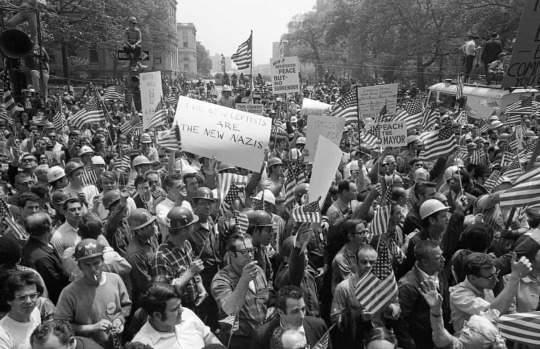
A pro-Vietnam war protest in May 1970 that descended into the Hard Hat Riot.
But the relationship between the US labour movement and younger progressives has not always been harmonious, to say the least. In the 1960s and 1970s, US labour was led by the gruff former plumber George Meany, a zealous supporter of the Vietnam war, who relished denouncing student protesters as “kookies”. The nadir came in the form of the so-called Hard Hat Riot of 1970, when hundreds of construction and office workers physically attacked student protesters in New York. Is there hope this time for solidarity between trade unionists and the rising US younger left?
“That kind of unity is something we are working on very hard,” says Sanders. “I’ve now held three rallies with progressive union leaderships – with Sean O’Brien, the new president of the Teamsters, and Sarah Nelson, the president of the Association of Flight Attendants – in Chicago, Philadelphia and Boston. What we see at these rallies is unionists coming together with younger progressives – and the unity of those forces, young people fighting for economic and racial justice with a union movement, has incredible potential. To answer the question: it’s absolutely imperative we bring them together – and we are trying to do that.”
When US workers fought bosses in the 1930s, they enjoyed the advantage of the sympathy and political muscle of the president, Franklin D Roosevelt. Joe Biden has repeatedly vowed to be “the most pro-union President ever”, but his career has long been wedded to establishment and “centrist” factions in the Democratic party. Sanders says he knows the President “reasonably well” and points to the 110-page policy platform his team hammered out with Biden’s campaign team in 2020, with taskforces covering areas ranging from healthcare to the environment.
“What the President recognised is that there was, and is, a movement of working people, of young people, who are sick and tired of the status quo, and I think, when we did the American Rescue Plan [to help the US through the pandemic], it was one of the most consequential pieces of legislation for working people in modern history. When we did the Build Back Better legislation [a huge package of measures related to social policy and the climate crisis], it had the support of the President for a multibillion-dollar transformational programme, and it was sabotaged by a couple of conservative Senators, but he said: ‘I will stand by the working people of the country and take on the big monied interests.’”
This differs from some of the more pessimistic narratives about Biden from the US left, which is still reeling from Sanders’ two presidential-nomination defeats. But his optimism springs not so much from naivety about Biden as from a firm belief in the ability of struggles from below to bend the powerful to act in workers’ interests. “You’re seeing a progressive movement of people in every state of this country which is beginning to go beyond incremental politics, asking: ‘How does it happen that every rich country on Earth – including the UK – has universal healthcare, while we have a dysfunctional system? Why in other countries is university education free, when in this country it’s outrageously expensive?”
I put it to him that his campaigns tapped into discontent, but magnified it and gave it direction. “What my campaign did was to raise issues, and the establishment suddenly discovered millions of people not happy with the status quo who wanted transformational change,” he says. Sanders gives the example of the President last week committing to cancel up to $10,000 (£8,500) of student debt. “Did it go as far as I wanted? No, but is it a significant step forward to alleviate the terrible burden that young people are suffering? Yes, it will help a lot.”
Another example is the recently passed Inflation Reduction Act, which, among other things, lowers prescription drug prices and promotes clean energy. “Again, it didn’t go as far as we campaigned on, but, on many of those issues, part of what we demanded has been implemented.”
What next for the US left? The youthful optimism of this 80-year-old senator appears limitless. Next, he says, they will grow the labour movement and tie it to the progressive movement. “You may or may not know, but, come January, in terms of politics, there will be a stronger underlying progressive presence in the House than at any time in modern history. We are seeing accomplishments at the political level, at the organising level, so we are making progress.”
Yet all of this relies on forcing a president to go beyond his comfort zone. Sanders remains one of the most popular politicians in the US, and his campaigns encouraged a galvanised US left to dare to dream of achieving outright political power. What lessons would a future campaign learn from his attempts, which transformed political debate in the US, but failed to secure him the presidency?
Sanders does a laugh anyone will recognise – the “I do not want to talk about this now” laugh. “That’s a long question – a very long question!” Again, he highlights his campaigns’ signature accomplishments – underlining that “a significant part of society is not happy with the status quo, that they’re sick and tired of income and wealth inequality and they want fundamental changes in our economic and political system”. But he clearly believes he was hobbled by establishment hostility. “When you take on the political establishment and the media establishment and the corporate establishment … it’s not an easy thing to do. We need time and we certainly didn’t have that luxury.”
I wonder, too, if he recognises that Enough Is Enough has emerged in large part because of a vacuum left by a Labour leadership that has abandoned any pretence of transformative change. Sanders is diplomatic. “I think it’s not dissimilar to what we’re seeing in the Democratic party here – I’m not commenting on the Labour party; I don’t know enough,” he says. Referring to traditional left-of-centre parties struggling in the global north, he adds: “Because working-class people are increasingly alienated from the political process, those parties are not delivering for them. That’s why the Democrats have a choice to make: are they the party of the working class or the elite?”
The legacy of Sanders, surely, is that he brought together otherwise fragmented and disillusioned pockets of discontent into a highly visible and articulate movement with confident demands. Maybe – just maybe – he can help pull off the same trick by helping to unite the increasingly assertive labour movements on both sides of the Atlantic.
#us politics#news#interview#sen. bernie sanders#biden administration#labour movement#united kingdom#great britain#europe#european politics#Mick Lynch#Rail Maritime and Transport Workers Union#Enough Is Enough#worker's rights#worker's union#unions#union workers#National Labour Relations Board#amazon#starbucks#jeff bezos#Howard Schultz#great depression#McCarthyism#red scare#the guardian#2022#reaganomics#Americans rescue plan#build back better act
40 notes
·
View notes
Text

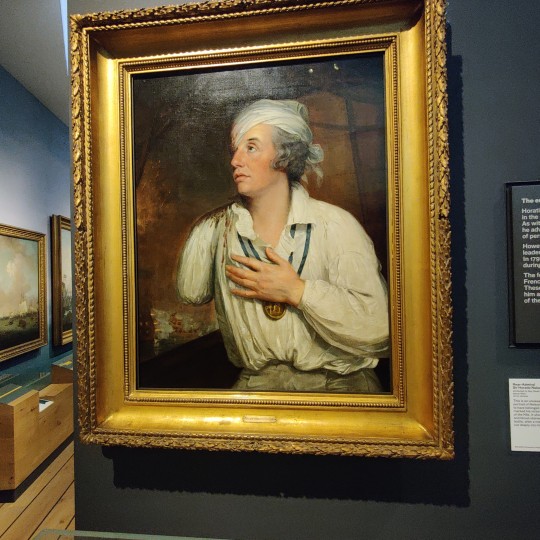


4 notes
·
View notes
Text



‘World’s most exciting classroom’ sets sail on Charles Darwin’s trail.
By Rob Harris
The Age - 15 August 2023



Under threat, the Galápagos still stuns in every way.
Long after the Galápagos Islands inspired Charles Darwin, they've become a natural selection for bucket-listers.
By Brook Turner
Good Weekend - July 28, 2023
The Age and The Sydney Morning Herald
#Charles Darwin#On the Origin of Species#Evolution#Darwin 200 project#Dutch tall ship Oosterschelde#HMS Beagle#Britain#Netherlands#Europe#South America#The Pacific#Australia#New Zealand#Galapagos Islands#Atlantic#Stewart McPherson#Nature#Humans#Connection with nature#Maritime culture#Nature and biodiversity#Land and water creatures#Fish and water creatures#Nature conservation#Planetary conservation#Environmental conservation
1 note
·
View note
Text

A fabulous illustration project to be involved with. Love working with the SS Great Britain Trust, they are such a passionate team of incredible people and the opportunity to visit the ship is wonderful for someone like me who loves to explore, like any child or adult child (me) would love to do. If you visit Bristol, make sure the SS Great Britain is at the top of your ‘to do’ list.
#ss great britain#maritime#british history#falkland islands#falklandislands#world history#history#isambard kingdom brunel#shipbuilding#birthday event#illustration#penandink#childrens illustration#family events#discovertheworld#amazingsights#historic architecture#united kingdom#history tag#bristolillustration#bristolhistory#illustrator bristol#bristollife#bristol illustration#bristol
1 note
·
View note
Text
But Germany's military successes left it with the huge logistical problem of what to do with the men scooped up as it surged through Europe. Prisoners were not just British, Commonwealth and American but French, Polish and Dutch and – as countries changed sides – Italian and Russian. After Germany invaded the Soviet Union in 1941, the Germans took nearly three million soldiers prisoner in the first four months of fighting; by the end of the war she had nearly six million Russian prisoners. After the Italian Armistice in September 1943, Germany sent 60,000 of her former ally's troops to POW camps. Russian POWs were treated particularly badly and many British POWs are still haunted by memories of the starved and broken bodies they glimpsed through the barbed wire that separated the compounds. Like the Japanese, the Soviet Union had no sympathy for soldiers who had allowed themselves to be taken prisoner and these men (and some women) became non-persons. The Soviet Union had not signed the Geneva Convention and Russian prisoners could expect no assistance from home. While German captors felt a cultural connection with the British men they captured, they had only distrust for the Russians. It was left to other POWs to lob their own precious supplies over the wire to help the starving Russians.
At the start of the war Germany had thirty-one POW camps; by 1945 this figure had risen to 248 – of which 134 housed British and American men. After Mussolini joined forces with Hitler in June 1940, men who were captured in North Africa were usually held in Italy and by the time Mussolini was overthrown and an armistice declared in September 1943 there were nearly 79,000 Allied prisoners in the country. By the end of the year, 50,000 had been taken to Germany and more, like the future travel writer, Eric Newby, who had spent some time on the lose, were later rounded up.
There was a huge diversity of architecture among camps that varied dramatically depending on the prisoner's rank, his escape record and whether or not he was made to work. Andrew Hawarden's first camp of Stalag XXA does not conform to either of the two most common stereotypes of a POW camp – the barbed wire, barrack huts and sentry posts of somewhere like Stalag Stalag Luft III, near Sagan (now Żagań) one hundred miles southeast of Berlin, which Paul Brickhill made famous through his book, The Great Escape, and Colditz, the glowing castle which many people still cannot think of without recalling the ominous music which accompanied the TV series of the same name
Most POW camps were nearer in design to Stalag Stalag Luft III, which was run by the Luftwaffe. In 1940 the German air force decided to build and control separate camps but they were quickly overwhelmed by the intensity of Allied bombing raids and many POW airmen ended up in military camps, albeit in separate compounds. My father's first camp, Stalag IVB, at Mühlberg, near Dresden, was built to hold 15,000 men but at its peak housed double this and included a large RAF contingent.
At first, naval and merchant-sailor prisoners were held at Stalag XB near the North Sea coast at Sandbostel until the German navy took control in 1942, when they were concentrated at a purpose-built site nearby at Westertimke. Naval POWs were held at two compounds (one for officers and the other for petty officers and senior ratings) at Marlag (an abbreviation of Marine Lager). Merchant seamen were held nearby at the larger camp of Milag (Marine-Interniertenlager).
— The Barbed-Wire University: The Real Lives of Allied Prisoners of War in the Second World War (Midge Gillies)
#book quotes#midge gillies#history#military history#aviation history#naval history#maritime history#prisoners of war#ww2#operation barbarossa#armistice of cassibile#germany#nazi germany#ussr#russia#italy#japan#britain#stalag luft iii#stalag iv-b#stalag x-b#marlag und milag nord#raf#royal navy#merchant navy (uk)#luftwaffe
0 notes
Text
Sailor enthusiasts I’m looking for some reading material on maritime trade of antiquity. Anything?
#history#antiquity#sailing#maritime trade#navigation#okay to be more specific I’m trying to write about a harbor in 6th century Britain without modern terms#like a longshoreman probably existed back then but was called something else I want THAT info#I have the overview stuff I need the super annoying details now lol
0 notes
Text
Total travel chaos hits UK as trains stop due to strike, flights grounded with no luggage handlers
New Post has been published on https://www.timesofocean.com/total-travel-chaos-hits-uk-as-trains-stop-due-to-strike-flights-grounded-with-no-luggage-handlers/
Total travel chaos hits UK as trains stop due to strike, flights grounded with no luggage handlers

Lonodn (The Times Groupe)- Since early Tuesday, Britain’s rail network has been running with skeleton services as thousands of rail workers have began an industrial action, while the country’s airports have already been paralyzed due to staff shortages for more than a month.
On Tuesday, Thursday, and Saturday this week, the Rail, Maritime and Transport (RMT) union will stage the biggest walkout in 30 years.
40,000 union members have stopped working as of Tuesday morning, the first of the walkouts. Most trains in England, Scotland, and Wales have been canceled.
On Monday afternoon, the RMT and the government failed to reach an agreement over wages.
“RMT’s national executive committee has now found both sets of proposals (from Network Rail and the train operating companies) unacceptable, and strike action will take place this week,” Mick Lynch, RMT general secretary, said.
“The Tory government has actively prevented a settlement to this dispute after slashing £4 billion from National Rail and Transport for London funding,” he said.
In addition, Lynch said, the rail companies are proposing pay rates that are significantly lower than inflation rates, and they have failed to guarantee against compulsory redundancies.”
As the last-minute talks failed, he blamed government ministers.
“For those that have no choice but to come in, it will be extremely difficult tomorrow and I think the public will understandably want to know why they are being put in this position,” said a statement from Prime Minister Boris Johnson’s spokesman.
“We believe we are seeking to offer a fair and reasonable pay rise and modernize the railway services for the long term, and we need to get rid of some of these outdated rules and procedures, some of which have not been updated for decades and which don’t serve the public.”
#Britain's rail network#england#Rail Maritime and Transport (RMT)#Scotland#strike in uk#The Times Groupe#Wales#World
0 notes
Text

Heavy ocean waves break over the quay in Porthleven, Cornwall
#Porthleven Harbour#Cornwall#high seas#Atlantic#UK#clock tower#coastline#maritime Britain#waves#seacoast
46 notes
·
View notes
Text
Recovering the Queer History of Britain’s Navy in the Age of Sail
If you missed this great talk from the Royal Museums Greenwich, the recording is available! From their YouTube channel:
What is the queer history of the Royal Navy in the age of sail? How did sailors break their society’s rules about sex and gender? Did they enter into same-sex relationships? Did they act in other ways that men ‘weren’t supposed to’ and what were the consequences? Is it possible to learn more about these sailors’ lives and why is it so important to do so?
Dr Seth Stein LeJacq (New York Institute of Technology) investigates sexual cultures at sea, discipline and military justice. This includes a long string of naval sex scandals, beginning with the 1698 trial of Captain Edward Rigby.
More Maritime History and Culture Seminars
Dr Seth Stein LeJacq's website
youtube
258 notes
·
View notes
Text
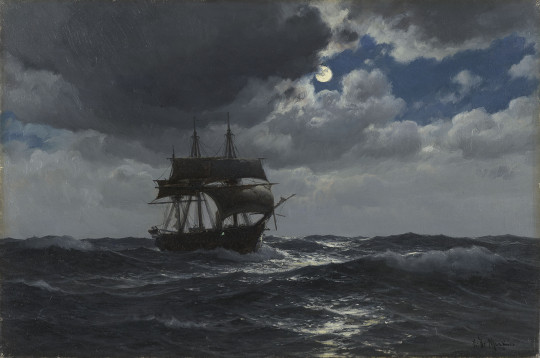
HMS Challenger by Eduardo de Martino
#hms challenger#art#marine art#eduardo de martino#england#great britain#maritime#pearl class corvette#royal navy#english#british#sea#waves#clouds#full moon#moonlight#moonlit#moon#sky#expedition#ocean#sail#sailing#steam assisted#age of sail#age of steam
73 notes
·
View notes
Text
[ 📹 Scenes from the destruction wrought by an Israeli occupation airstrike which targeted a vehicle being driven by 7 foreign aid workers belonging to the World Central Kitchen, killing all inside. Among the dead included foreign citizens of Britain, Poland, and Australia, along with a dual American and Canadian citizen. The aid organization said it had coordinated the movements of its personnel with the Israeli authorities, who knew the vehicle contained humanitarian aid workers.]
🇮🇱⚔️🇵🇸 🚀🚀🚙💥 🚨
ISRAELI OCCUPATION BOMBS FOREIGN AID WORKERS, CONTINUES BOMBING ACROSS GAZA ON DAY 179 OF GENOCIDE
On the 179th day of "Israel's" ongoing war of genocide in the Gaza Strip, the Israeli occupation forces (IOF) committed a total of 7 new massacres of Palestinian families, resulting in the deaths of no less than 71 Palestinians, mostly women and children, while another 102 others were wounded over the previous 24-hours.
In the latest occupation atrocity, the Zionist army bombed the vehicle of a group of Foreign aid personnel working for the World Central Kitchen (WCK), killing 7 employees, including 6 foreigners.
"World Central Kitchen is devastated to confirm seven members of our team have been killed in an IDF strike in Gaza," the organization said in a statement on its website.
According to the World Central Kitchen, despite coordinating the organization's movements with the Israeli occupation army, a convoy including two armored cars branded with the WCK logo and one soft-skin vehicle that were carrying the WCK team while it was traveling through a "deconflicted zone" was struck by an Israeli bomb, destroying at least one of the vehicles.
WCK says the team was leaving their Deir al-Balah warehouse, in the central Gaza Strip, where their teams unloaded more than 100 tons of humanitarian food aid brought to Gaza through a maritime route, when the convoy was targeted by Zionist forces.
“This is not only an attack against WCK, this is an attack on humanitarian organizations showing up in the most dire of situations where food is being used as a weapon of war. This is unforgivable,” World Central Kitchen CEO, Erin Gore is quoted as saying.
The seven foreign aid workers killed in the Zionist strike included citizens from Australia, Poland, the United Kingdom, as well as a dual-citizen of the United States and Canada, and one Palestinian.
“I am heartbroken and appalled that we—World Central Kitchen and the world—lost beautiful lives today because of a targeted attack by the IDF. The love they had for feeding people, the determination they embodied to show that humanity rises above all, and the impact they made in countless lives will forever be remembered and cherished,” Erin Gore added.
In response to the International outcry over the atrocity, the Israeli occupation authorities said they will be “carrying out an in-depth examination at the highest levels to understand the circumstances of this tragic incident.”
The World Central Kitchen has suspended its operations in Gaza as a result of the incident.
In yet another atrocity yesterday, the Israeli occupation army bombed the Iranian consulate building in the Syrian capital of Damascus, killing several high-level Iranian officials, including 7 military advisors of Iran's Islamic Revolutionary Guard Corps (IRGC).
In response to the strike, Iranian Supreme Leader, Ayatollah Seyyed Ali Khamenei said in an announcement issued on Tuesday that the "evil Zionist regime will regret" it's crime of assasinating Iran's military advisors in Syria.
The Iranian leader said that both Brigadier General Mohammad Reza Zahedi, a commander of the IRGC’s Quds Force, and his deputy, General Mohammed Hadi Haji Rahimi were killed in the strike, which targeted the Iranian consulate in Damascus, declaring the crime was perpetrated by the "usurping and dispicable" Zionist regime.
“The evil regime will be punished by our brave men. We will make them regret this crime and other ones, by God's will," the Iranian leader added.
As Israel's crimes spread outside the occupied Palestinian territories and the Gaza Strip, and into the wider West Asian region, the bombing inside Palestine continued unabated.
In just one example, local civil defense crews recovered the bodies of six Palestinians who were killed, including two children, along with a number of wounded civilians, following a Zionist occupation airstrike targeting the Zarub family home, located in the city of Rafah, in the south of the Gaza Strip.
In another atrocity, several Palestinians were killed and a large number wounded after occupation artillery shelling targeted a number of residential buildings in the city of Khan Yunis, also in the south of Gaza, focusing artillery fire on the eastern and central parts of the city.
Meanwhile, Zionist warplanes bombed the al-Bashir Mosque, in the city of Deir al-Balah, in the central Gaza Strip, martyring a several civilians, including the death of at least one child, and wounding at least 20 others, while also dealing significant damage to neighboring residential buildings.
Similarly, Zionist fighter jets fired several missiles that slammed into two residential homes in the Al-Zaytoun neighborhood, southeast of Gaza City, while occupation artillery shelling targeted the Tal al-Hawa neighborhood, along with the Sheikh Ajlin neighborhood, martyring three civilians and wounding six others.
Over the last day, as the Zionist occupation army withdrew from the Al-Shifa Medical Complex, located in the Al-Rimal neighborhood of Gaza City, which had been the largest and most well-equipped hospital in the entire Gaza Strip, a scene of mass destruction and carnage was revealed, with hundreds of bodies littering the hospital grounds, including some bodies discovered with handcuffed wrists, having been extra-judicially executed in cold-blood.
Among the bodies recovered from Al-Shifa were doctors and healthcare personnel, along with entire Palestinian families, which the Gaza Media Office says were just a small part of the roughly 400 citizens that were killed in two weeks of fighting near the hospital.
About another 900 Palestinians were arrested or detained by Zionist forces under suspicion of belonging to Resistance groups, while the Hospital buildings themselves were nearly completely destroyed, blown to pieces and left as scorched shells by the American bombs dropped on them by the Israeli occupation army.
As a result of "Israel's" ongoing war of genocide in the Gaza Strip, the infinitely rising death toll has now exceeded 32'916 Palestinians killed, more than 25'000 of which being among women and children, while an additional 75'494 others have been wounded since the start of the current round of Zionist aggression beginning on October 7th, 2023.
#source1
#source2
#source3
#source4
#source5
#source6
#source7
#videosource
@WorkerSolidarityNews
#gaza#gaza strip#gaza news#gaza war#gaza genocide#genocide in gaza#genocide#genocide of palestinians#israeli genocide#israeli war crimes#war crimes#crimes against humanity#israel#israeli occupation forces#israeli military#israeli occupation#palestine#palestine news#palestinians#free palestine#politics#israel palestine conflict#war#news#geopolitics#world news#global news#international news#breaking news#current events
109 notes
·
View notes
Text
Reading more about the Industrial Revolution (and its consequences), and I am increasingly developing the understanding (probably mainstream in circles more well-versed in the subject than I) that the UK industrialized early enough, and for a long enough time, that many regions of Great Britain were able to develop an industrial-labor folk culture, in the way that agricultural societies develop a peasant labor folk culture and seafaring societies a maritime labor folk culture, etc.
This put the intense, blistering hatred felt for Margaret Thatcher into perspective. It wasn't just a Thatcher Derangement Syndrome of the salaried classes, or an anger that globalizing deindustrialization would merely impoverish people. No, for many in the UK, deindustrialization amounted to a destruction of their traditional way of life. And was thus met with the kind of fury more commonly associated with peasants forced into factories, or pastoralists forced onto communal farms.
431 notes
·
View notes